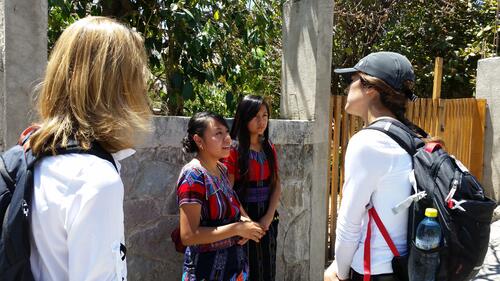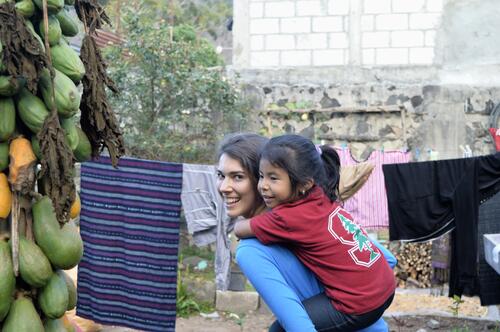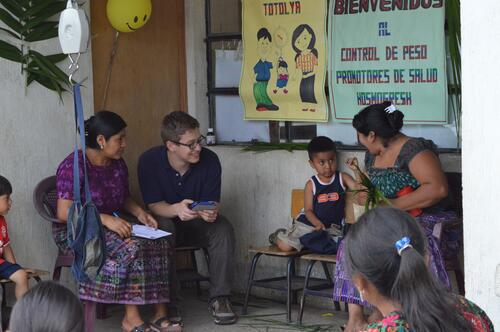Rates of obesity in the United States remain extremely high. New statistics show that nearly two-thirds of adults are at an unhealthy weight and that – for the first time ever – obese Americans now outnumber those who are merely overweight.
Two Stanford public health law experts say one of biggest culprits of the obesity epidemic – on top of fast foods and our sedentary lifestyle – are sugary drinks.
And they believe the sweet spot for public health law in curbing the adverse effects of sugar-sweetened beverages (SSBs) lies in the strategic use of measures such as higher SSB taxes, limits on advertisements targeting kids, and restrictions on soft drinks and sugar-sweetened teas and sports drinks in government institutions, such as public schools.
“It’s always possible to get more and better evidence about the effectiveness of public health laws,” says David Studdert, a professor of medicine at the Stanford School of Medicine, professor at the Stanford Law School and core faculty member at the Center for Health Policy/Center for Primary Care and Outcomes Research.
“But enough is already known about the promise of some legal interventions to curb SSB consumption – significant tax hikes and advertising restrictions are two good examples – to be fairly confident that they would make a difference.”
Studdert is the lead author of a review paper published July 7 in PLoS Medicine, entitled, “Searching for Public Health Law’s Sweet Spot: The Regulation of Sugar-Sweetened Beverages.”
Studdert and senior author Michelle Mello, professor of law and professor of health research and policy at the School of Medicine, and co-author Jordan Flanders, a former Stanford Law School student, argue that sugary drinks are a substantial, yet preventable contributor to the global burden of obesity and associated health conditions.
A new study published June 29 in the American Heart Association journal Circulation linked the consumption of sugary drinks to an estimated 184,000 adult deaths each year, with more than 25,000 of those Americans. The study, conducted by researchers from Tufts University, found that the beverages are responsible for an estimated 133,000 of those deaths from diabetes, 45,000 from cardiovascular disease and 6,450 from cancer.
While Americans’ consumption of sugary drinks has plateaued, according to the Tufts study, about three-fourths of the deaths due to SSBs are now in developing countries. Mexico leads with 24,000 total deaths. The United States still ranks fourth, however, just behind South Africa and Morocco.
The Stanford researchers say the evidence shows that sugary drinks are contributors to the global obesity epidemic, but the appropriate reach of regulation to curtail SSB consumptions remains highly contested.
The main regulatory approaches to SSBs are higher taxes, restrictions on the availability of the sugar-sweetened drinks in schools, restrictions on advertising and marketing, labeling requirements and government procurement and benefits standards.
“Finding public health law’s sweet spot requires regulatory approaches that are capable both of achieving measurable improvements to public health and of winning victories in courts of law and public opinion,” the researchers write.
Over the last decade, many national, state, and local governments have introduced laws aimed at curbing consumption of sugar-sweetened beverages (SSBs), especially by children. The main regulatory approaches have been taxes, restrictions on the availability of SSBs in schools, calls for controls on advertising and marketing, labeling requirements, and government procurement and benefits standards.
But efforts to regulate the drinks often encounter stiff opposition, including claims that the laws are inequitable, do not achieve their goals, and have negative economic effects.
New York City’s attempt to ban the sale of jumbo-sized sugary drinks sold in city restaurants, theaters and food carts triggered international headlines and a firestorm of opposition. The soft drink industry embarked on a multimillion-dollar campaign to block the proposal championed by former Mayor Michael Bloomberg.
The proposal died last year when the New York State Court of Appeals ruled that the city’s Board of Health had “exceeded the scope of its regulatory authority.”
Taxes on SSBs, the most commonly adopted measure, vary widely, the authors write. A few countries, most notably several South Pacific island nations, where obesity rates are among the highest in the world, have introduced very high taxes on sugary drinks.
But most sugar-sweetened beverage taxes add between 5 and 9 cents per liter. This is well short of the level that experts argue is needed to significantly affect consumption and weight outcomes: a sales tax of at least 20 percent of the container’s price or a specific excise tax of 1 cent per ounce.
“In the United States, there have been many government proposals to introduce or raise taxes – most unsuccessful,” the authors write. “The beverage industry has invested heavily in public relations firms and `grassroots’ organizations to oppose the initiatives.”
Berkeley, Calif., recently became the first U.S. city to pass an SSB tax, a penny-per-ounce excise on soda distributors, but a similar ballot measure in nearby San Francisco failed. At least 22 states have proposed SSB taxes since 2010, but only one state, Washington, passed a measure at the level recommended by economists – and it was repealed the following year in a voter referendum.
Yet U.S. childhood obesity has more than doubled in children and quadrupled in adolescents in the past 30 years, according to the Centers for Disease Control and Prevention. More than one-third of children and adolescents are overweight or obese.
“There is broad consensus in the public health community that reducing the influence of advertising is a critical step in addressing the spread of childhood obesity,” the authors say.
The United States and Canada have sought to regulate advertisers through a soft approach — mainly via voluntary guidelines and pressure to self-regulate, the authors write.
“These appear to have had only a modest impact on marketing practices,” they said. “U.S. regulators face considerable legal barriers in going further, including courts’ increasingly expansive interpretations of the scope of protected commercial speech under the First Amendment. Unless judicial currents shift, it will remain extremely difficult to impose restrictions on SSB advertising.”
Mello said low- and middle-income countries should anticipate that SSB companies will increasingly target them as promising markets, and that those developing countries should start crafting their regulatory responses now.
“Our experience with tobacco control teaches us that lower- and middle-income countries need to become wary when product regulation in the U.S. tightens,” Mello said. “Like squeezing a balloon, it pushes companies to intensify their marketing efforts overseas, and our public health problems get exported."
And, the authors note, while policy nudges have become fashionable, “there are dangers in treading too lightly.” “Strategies such as calorie labels, portion caps, and small beverage taxes preserve consumer freedom but are typically too modest to affect consumer behavior – and such modesty can be recast as arbitrariness. Industry opposition will come whether the intervention is modest or aggressive but should be easier to combat if officials can show their policy is effective,” they wrote.
“One somewhat surprising message that comes from reviewing how courts have handled challenges to SSB laws is that regulators can run greater risks of having their laws struck down if they are too timid,” Studdert said.
“Courts weigh effectiveness, and modest attempts to change behavior are often ineffective,” he said. “So one piece of advice regulators in this area should consider is to ‘go big or go home’.”








